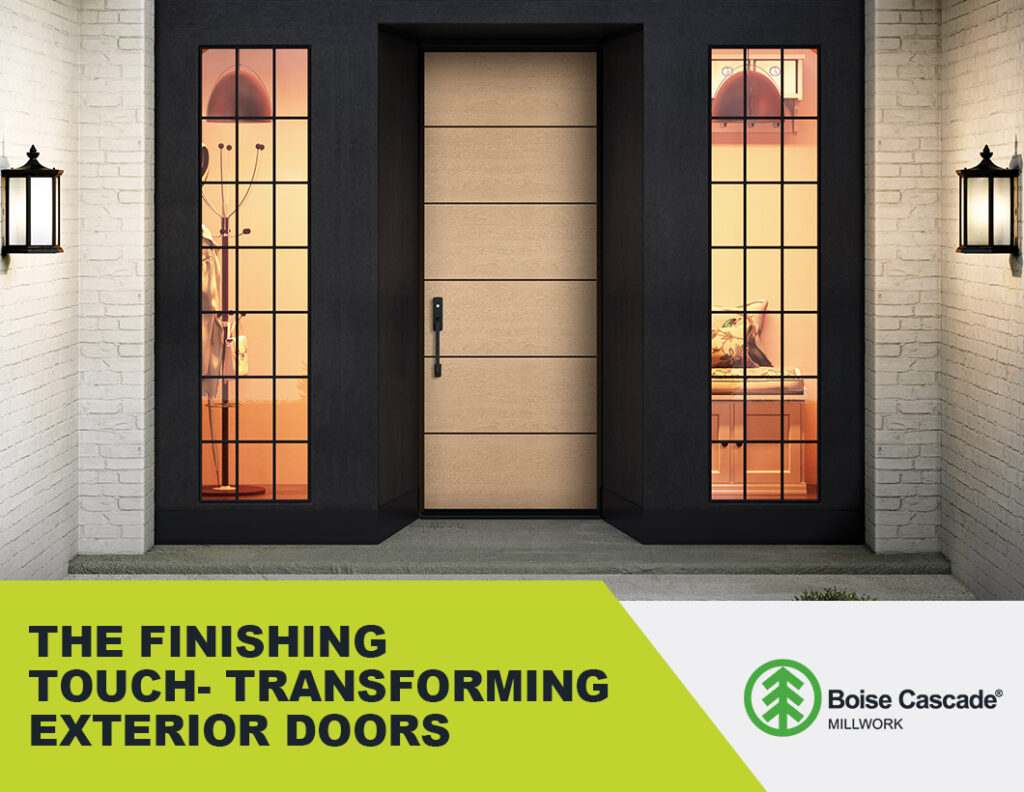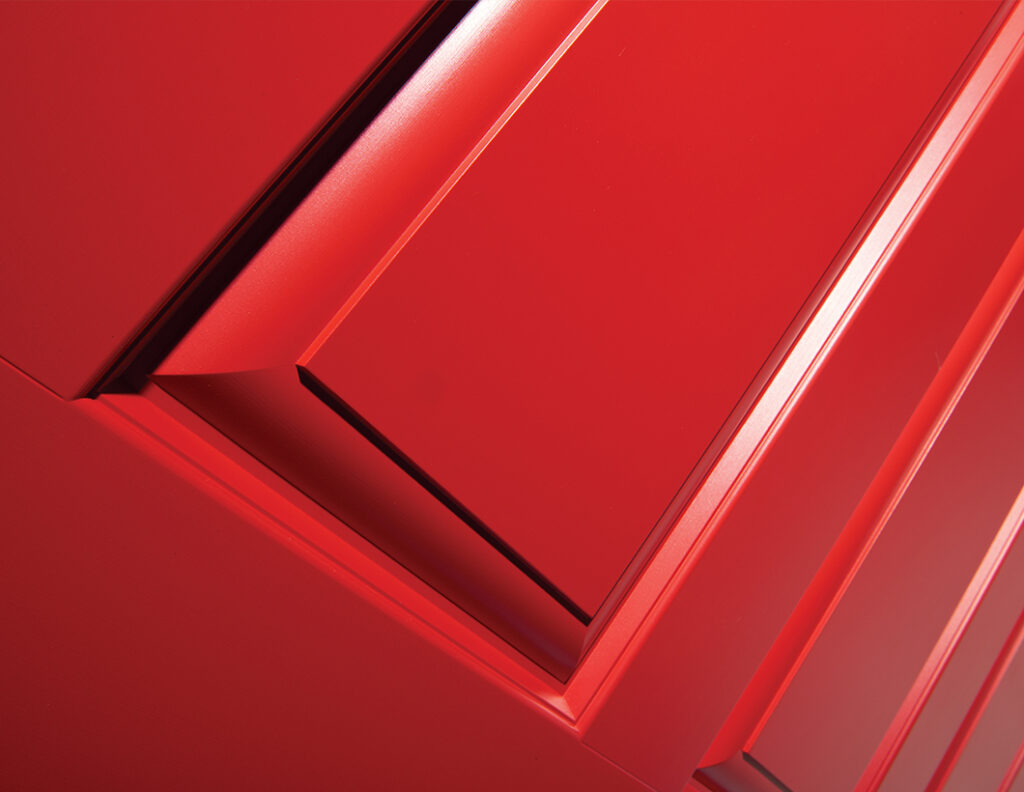Menu


When it comes to exterior doors, finish isn’t just about looks; it’s about performance. A properly applied finish protects against weather, UV exposure, and wear while enhancing curb appeal. For dealers, the finish is often the final step that determines whether a door delivers lasting value or becomes a maintenance headache.
At Boise Cascade Millwork, the Symphony Collection™ and PrismaGuard® from Therma-Tru Doors offer durable, factory-applied paint options engineered for long-term performance. These finishes deliver craftsmanship, protection, and design flexibility. Understanding the finishing process, the difference between paint and stain, and how to maintain these products helps ensure superior results for your millwork projects.
Exterior door finishing is more than applying color—it’s a multi-step process that directly impacts durability and longevity. Professional finishing, such as that offered through Boise Cascade Millwork, follows a carefully controlled sequence:
For dealers, this process means doors arrive on-site ready for installation, eliminating finishing delays and ensuring consistent results across projects.

Choosing between paint and stain is both a functional and aesthetic decision.

The right choice depends on client priorities. Paint often wins for durability and color flexibility, while stain is preferred for projects where natural aesthetics are paramount. Dealers should consider the environment, client maintenance expectations, and the overall design scheme before making a recommendation.

Field finishing can be inconsistent, time-consuming, and vulnerable to environmental variables like temperature and humidity. In contrast, factory-applied finishes offer several advantages:
For builders, this means fewer warranty claims, higher customer satisfaction, and a better reputation for quality installations.

Even the best finishes require care to maximize service life. Dealers can educate homeowners with these maintenance best practices:
When homeowners understand proper maintenance, they protect their investment and reduce the risk of costly repairs.

A dependable finish isn’t just an aesthetic choice; it’s a business decision that impacts project efficiency, long-term performance, and client satisfaction. Factory-applied systems like the Symphony Collection™ and PrismaGuard® give professionals a level of consistency and protection that is difficult to achieve in the field. Each product is engineered for uniform coverage, color retention, and resistance to the elements, helping reduce callbacks, rework, and finish-related maintenance over time. For builders, remodelers, and dealers, recommending factory-finished doors means delivering greater value to every customer. The controlled application process ensures quality from the start, while the durability of these finishes supports long-term performance in a wide range of environments. By choosing trusted, factory-applied finishes, you not only streamline installation but also strengthen your reputation for providing products that last, offering performance, protection, and professionalism in every project.
Factory-applied finishes, like those from Boise Cascade Millwork and Therma-Tru, are applied under controlled conditions to ensure consistent coverage, color retention, and superior protection against moisture, UV exposure, and wear. They also save contractors time by eliminating on-site finishing.
The Symphony Collection offers a professionally applied paint system designed specifically for exterior doors. It provides smooth, uniform coverage with enhanced durability, reducing the risk of peeling, fading, or cracking over time.
PrismaGuard paint offers full, opaque color coverage that protects against weathering and hides surface imperfections. PrismaGuard stain enhances the natural woodgrain pattern, creating depth and richness while maintaining a more traditional wood appearance.
Maintenance includes regular cleaning with mild soap and water, inspecting for damage or fading, and touching up small scratches promptly. Following the manufacturer’s specific care instructions helps maintain long-term beauty and performance.
Contractors should consider the project’s design goals, environmental exposure, and maintenance expectations. Painted doors deliver bold color and durability, while stained doors highlight natural textures and warmth—ideal for more traditional or rustic aesthetics.
